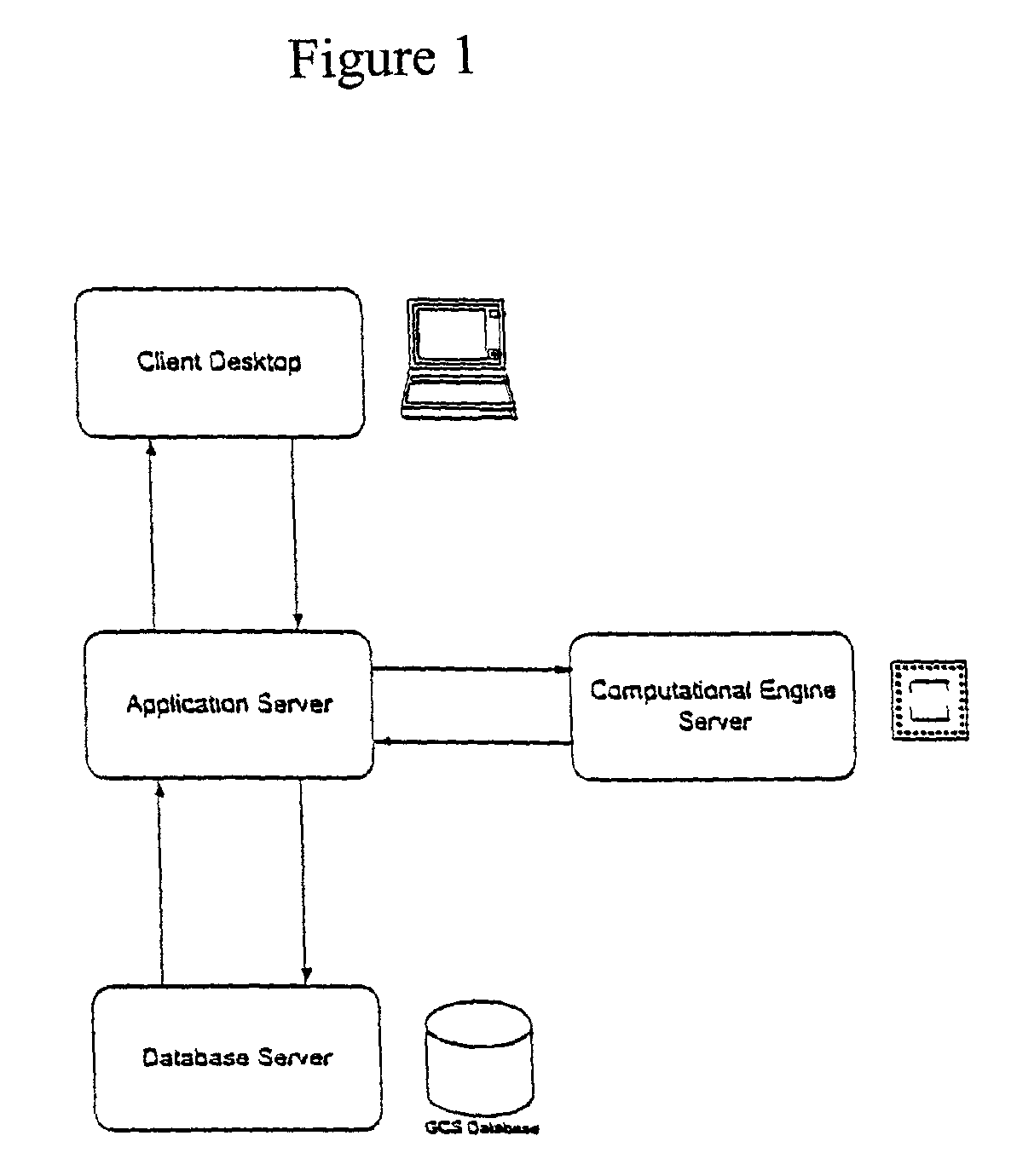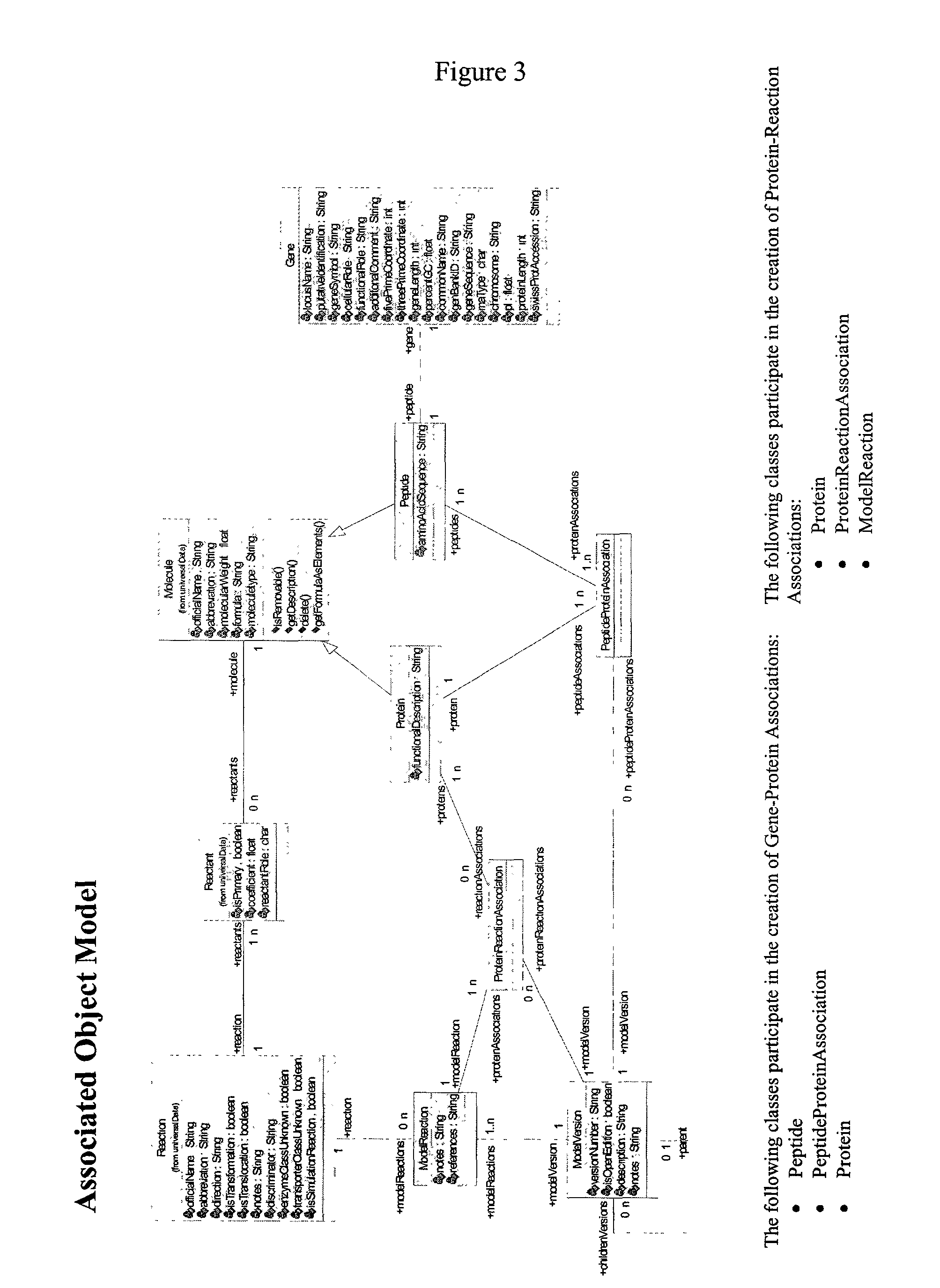Systems and methods for constructing genomic-based phenotypic models
a genomic and network model technology, applied in the field of simulation modeling, can solve the problems of harm to individuals participating in clinical trials, inability to identify the effects of the candidate drug or the drug inhibited target on other molecular components of the cell or organism, and unwanted or even dangerous side effects
- Summary
- Abstract
- Description
- Claims
- Application Information
AI Technical Summary
Problems solved by technology
Method used
Image
Examples
example i
Associating Genes, Proteins, and Reactions
[0193]This example describes construction of a network model and a reaction index for the network model. This example demonstrates interactions of a user with the model content browser to associate the chosen ORFs to protein, and proteins to reactions. This example further demonstrates how this information is modeled from an object perspective and a data schema.
[0194]A reaction index was constructed to include reaction components for both gene-associated and non gene-associated reactions. Gene-associated reactions were added to the reaction index as follows. Associations in the reaction index were formed based on known or putative associations of a reaction to the proteins or enzymes which enable or catalyze the reaction and the open reading frames (ORFs) that code for these proteins. The associations were formed to capture the relationship between the reactions and proteins as well as between the proteins and ORFs such that connectivity bet...
example ii
Heuristic Algorithm for Confidence Level
[0227]This example demonstrates a heuristic algorithm for determining overall confidence for inclusion of a reaction component in a particular network model based upon the level of information acquired in each of five categories.
[0228]The confidence levels range on a scale from zero to four with four being the highest rating level. A simple five level scale is adequate to distinguish between reactions with low confidence versus those with high confidence. The algorithm takes the level of significance assigned to each information category and filters them into a quantitative confidence level. The five levels will provide a basic indication of the confidence that the model content developer has in a reaction and the associated protein(s) and ORF(s) being included in a model. The meaning of the five levels is provided below[0229]Level 0—the reaction has no calculated confidence[0230]Level 1—the reaction is supported by minimal evidence or even no...
example iii
Identification and Satisfaction of a Macro Requirement Deficiency
[0240]This example describes analysis of a network model to identify a gap.
[0241]The user selects the “Run Gap Analysis” button to activate the network analysis. In response, the system activates the network analysis and identifies the presence of gaps defined as either metabolites that occur only once as a reactant or metabolites that occur multiple times as only a substrate or product with all the reactions being irreversible.
[0242]These situations will cause the associated reactions never to be utilized in the model simulations. For each gap, the system displays the name of the compound, the compartment in which the compound occurs, a description that indicates if the compound is consumed only or produced only, a checkbox that enables users to indicate which gaps have been reviewed. All gaps are sorted by compound abbreviation.
[0243]In the following two examples, A and B occur only once as a reactant. A and B repres...
PUM
| Property | Measurement | Unit |
|---|---|---|
| data structure | aaaaa | aaaaa |
| structure | aaaaa | aaaaa |
| charge balancing | aaaaa | aaaaa |
Abstract
Description
Claims
Application Information
 Login to View More
Login to View More - R&D
- Intellectual Property
- Life Sciences
- Materials
- Tech Scout
- Unparalleled Data Quality
- Higher Quality Content
- 60% Fewer Hallucinations
Browse by: Latest US Patents, China's latest patents, Technical Efficacy Thesaurus, Application Domain, Technology Topic, Popular Technical Reports.
© 2025 PatSnap. All rights reserved.Legal|Privacy policy|Modern Slavery Act Transparency Statement|Sitemap|About US| Contact US: help@patsnap.com



